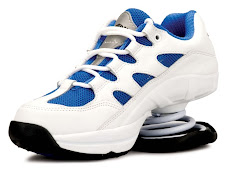 What is Plantar Fasciitis?
What is Plantar Fasciitis?Plantar fasciitis is the most common cause of heel pain. The plantar fascia is the flat band of tissue (ligament) that connects your heel bone to your toes. It supports the arch of your foot. If you strain your plantar fascia, it gets weak, swollen, and irritated (inflamed). Then your heel or the bottom of your foot hurts when you stand or walk.
Plantar fasciitis causes stabbing pain that usually occurs with your very first steps in the morning. Once your foot limbers up, the pain of plantar fasciitis normally decreases, but it may return after long periods of standing or after getting up from a seated position.
Plantar fasciitis is particularly common in people who are on their feet a lot, such as athletes and soldiers. People who are overweight, women who are pregnant and those who wear shoes with inadequate support, are also at a higher risk of plantar fasciitis.
What Causes Plantar Fasciitis?
Under normal circumstances, your plantar fascia acts like a shock-absorbing bowstring, supporting the arch in your foot. But, if tension on that bowstring becomes too great, it can create small tears in the fascia. Repetitive stretching and tearing can cause the fascia to become irritated or inflamed. Plantar fasciitis is caused by straining the ligament that supports your arch, which can lead to pain and swelling. This is more likely to happen if:
- Your feet roll inward too much when you walk (excessive pronation).
- You have high arches or flat feet.
- You walk, stand, or run for long periods of time, especially on hard surfaces.
- You are overweight.
- You wear shoes that don't fit well or are worn out.
- You have tight Achilles tendons or calf muscles.
What are the Symptoms?
In most cases, the pain associated with plantar fasciitis:
- Develops gradually
- Affects just one foot, although it can occur in both feet simultaneously
- Is worst with the first few steps after awakening, although it also can be triggered by long periods of standing or getting up from a seated position
- Feels like a sharp pain in the heel of your foot
What are the Risk Factors?
Factors that may increase your risk of developing plantar fasciitis include:
- Age. Plantar fasciitis is most common between the ages of 40 and 60.
- Sex. Women are more likely than men to develop plantar fasciitis.
- Certain types of exercise. Activities that place a lot of stress on your heel and attached tissue — such as long-distance running, ballet dancing and dance aerobics — can contribute to an earlier onset of plantar fasciitis.
- Faulty foot mechanics. Being flat-footed, having a high arch or even having an abnormal pattern of walking can adversely affect the way weight is distributed when you're standing, putting added stress on the plantar fascia.
- Obesity. Excess pounds put extra stress on your plantar fascia.
- Occupations that keep you on your feet. People with occupations that require a lot of walking or standing on hard surfaces — such as factory workers, teachers and waitresses — can damage their plantar fascia.
- Improper shoes. Shoes that are thin soled, loose, or lack arch support or the ability to absorb shock don't protect your feet. If you regularly wear shoes with high heels, your Achilles tendon — which is attached to your heel — can contract and shorten, causing strain on the tissue around your heel.
Keep in mind, ignoring plantar fasciitis may result in a chronic condition that hinders your regular activities. You may also develop foot, knee, hip or back problems because of the way plantar fasciitis changes your walking motion.
Lifestyle and Home Remedies
- Put your feet up. Stay off your feet for several days when the pain is severe.
Apply ice. Hold a cloth-covered ice pack over the area of pain for 15 to 20 minutes three or four times a day or after activity. Or try ice massage. Freeze a water-filled paper cup and roll it over the site of discomfort for about five to seven minutes. Regular ice massage can help reduce pain and inflammation. - Decrease your miles. You probably won't have to permanently retire your running or walking shoes, but it's a good idea to cover shorter distances until pain subsides.
Take up a no- or low-impact exercise. Swap swimming or bicycling in place of walking or jogging. You'll likely be able to return to your regular activities as heel pain gradually improves or disappears. However, some people find that the only way to avoid a recurring problem is to permanently modify their aerobic activities. - Use shoes that have an added arch support. Arch supports take the tension off the plantar fascia and help absorb shock. Z-CoiL shoes help by absorbing up to 50% of the shock to your joints caused by everyday walking. Our footwear is created with nearly an inch of soft and resilient forefront cushioning and its rocker-bottom shape gently assists your forward motion. The Z-Orthotic™ helps to support the longitudinal arch, reducing stress on the plantar fascia. The coil in the heel can also be adjusted for over-pronation (flat feet) to normalize your gait.
- Stretch your arches. Simple exercises using household objects can stretch your plantar fascia, Achilles tendon and calf muscles.

No comments:
Post a Comment